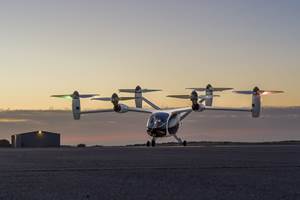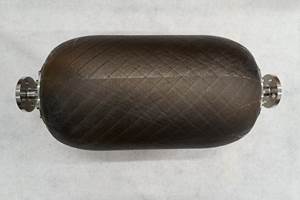Winners announced for California offshore wind energy auction
First offshore wind lease sale in the Pacific results in more than $757 million in winning bids for five lease areas in the U.S., adding to the Carolinas and New York Bight.
Provisional winners, high bids and auction area. Photo Credit: Bureau of Ocean Energy Management (BOEM)
On Dec. 7, the U.S. Department of the Interior (Washington, D.C., U.S.) announced results from the Bureau of Ocean Energy Management’s (BOEM) wind energy auction for five leases offshore California. The lease sale represents the third major offshore wind lease sale this year (see “U.S. administration announces offshore wind energy auction for the Carolinas”) and the first ever for the Pacific region. The sale drew competitive high bids from five companies totaling $757.1 million, well exceeding the first lease sales that were held in the Atlantic.
“The U.S. administration believes that to address the climate crisis head on, we must unleash a new era of clean, reliable energy that serves every household in America. This lease sale is further proof that industry momentum — including for floating offshore wind development — is undeniable,” Secretary Deb Haaland says. “A sustainable, clean energy future is within our grasp and the Interior Department is doing everything we can to ensure that American communities nationwide benefit.”
The interest and success of the sale represents a significant milestone toward achieving the president’s goal of deploying 30 gigawatts (GW) of offshore wind energy capacity by 2030 and 15 GW of floating offshore wind capacity by 2035.
“The innovative bidding credits in the California auction will result in tangible investments for the floating offshore wind workforce and supply chain in the U.S., and benefits to Tribes, communities and ocean users potentially affected by future offshore wind activities. This auction commits substantial investment to support economic growth from floating offshore wind energy development — including the jobs that come with it,” BOEM director Amanda Lefton adds.
BOEM’s lease sale offered five lease areas covering 373,268 total acres off central and northern California. The leased areas have the potential to produce more than 4.6 GW of offshore wind energy, enough to power more than 1.5 million homes.
Provisional winners include:
- RWE Offshore Wind Holdings LLC
- Lease area: OCS-P 0561, 63,338 acres
- High bid: $157.7 million
- California North Floating LLC
- Lease area: OCS-P 0562, 69,031 acres
- High bid: $173.8 million
- Equinor Wind US LLC
- Lease area: OCS-P 0563, 80,062 acres
- High bid: $130 million
- Central California Offshore Wind LLC
- Lease area: OCS-P 0564, 80,418 acres
- High bid: $150.3 million
- Invenergy California Offshore LLC
- Lease area: OCS-P 0565, 80,418 acres
- High bid: $145.3 million
The lease sale included a 20% credit for bidders who committed to a monetary contribution to programs or initiatives that support workforce training programs for the floating offshore wind industry, the development of a U.S. domestic supply chain for the floating offshore wind energy industry or both. This credit will result in more than $117 million in investments for these critical programs or initiatives.
The auction also included 5% credits for bidders who committed to entering community benefit agreements (CBAs). The first type of agreement is a Lease Area Use CBA with communities, stakeholder groups or Tribal entities whose use of the lease areas or use of the resources harvested from the lease areas is expected to be impacted by offshore wind development. The second type of agreement is a General CBA with communities, Tribes or stakeholder groups that are expected to be affected by the potential impacts on the marine, coastal or human environment from lease development.
Under stipulations in the leases, lessees are required to engage with Tribes, ocean users and local communities that may be affected by their lease activities. Lessee engagement must allow for early and active information sharing, focused discussion of potential issues and collaborative identification of solutions. These communication and engagement activities must be routinely reported to BOEM. These lease stipulations are intended to promote offshore wind energy development in a way that coexists with other ocean uses, addresses potential impacts and benefits and protects the ocean environment, while also facilitating our nation’s energy future for generations to come.
More information about the sale, including requirements regarding the bidding credits, can be found on the BOEM’s website.
Related Content
How composites have become a necessity
Composites used to be one of many material options across industries and applications, but that's not the case anymore.
Read MoreNCC reaches milestone in composite cryogenic hydrogen program
The National Composites Centre is testing composite cryogenic storage tank demonstrators with increasing complexity, to support U.K. transition to the hydrogen economy.
Read MoreCollins Aerospace to lead COCOLIH2T project
Project for thermoplastic composite liquid hydrogen tanks aims for two demonstrators and TRL 4 by 2025.
Read MoreInfinite Composites: Type V tanks for space, hydrogen, automotive and more
After a decade of proving its linerless, weight-saving composite tanks with NASA and more than 30 aerospace companies, this CryoSphere pioneer is scaling for growth in commercial space and sustainable transportation on Earth.
Read MoreRead Next
Developing bonded composite repair for ships, offshore units
Bureau Veritas and industry partners issue guidelines and pave the way for certification via StrengthBond Offshore project.
Read MoreVIDEO: High-volume processing for fiberglass components
Cannon Ergos, a company specializing in high-ton presses and equipment for composites fabrication and plastics processing, displayed automotive and industrial components at CAMX 2024.
Read MorePlant tour: Daher Shap’in TechCenter and composites production plant, Saint-Aignan-de-Grandlieu, France
Co-located R&D and production advance OOA thermosets, thermoplastics, welding, recycling and digital technologies for faster processing and certification of lighter, more sustainable composites.
Read More

























